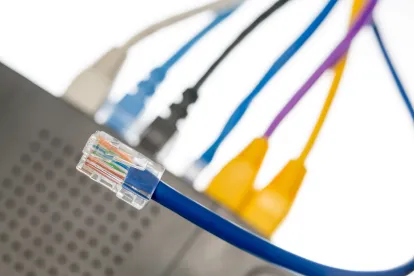The Federal Communications Commission (FCC) adopted last week new rules that signal a new approach to tackling calls that violate the Telephone Consumer Protection Act (TCPA). In its first rulemaking dealing with the TCPA under Chairman Ajit Pai, the FCC is removing barriers that prevent telecommunications providers from blocking calls that presumably violate the TCPA because they misleadingly appear to originate from telephone numbers that should not be originating calls at all.
The TCPA prohibits telemarketing calls without prior express written consent to residential numbers and wireless telephone numbers using an automatic telephone dialing system (ATDS) or artificial voices or prerecorded messages. It also prohibits non-telemarketing calls without prior express consent to wireless telephone numbers using an ATDS or artificial voices or prerecorded messages. Among the most noxious infringers of the TCPA are scammers who use robocalls[1] to attempt to trick consumers by “spoofing” the Caller ID information of the call to make it look like the call comes from an organization or area code that is familiar to the consumer. Spoofing, however, is not always problematic, much less illegal; as the FCC has explained, calling centers often rely on (lawful) spoofing to comply with the TCPA rules and display the telephone number of the entity on whose behalf it is making the calls.
In an attempt to curb spoofed robocalls that violate the TCPA, the FCC issued a Report and Order and Further Notice of Proposed Rulemaking on November 17, 2017, that would allow providers of telecommunications services (including VoIP and CMRS providers) to block calls in four narrow circumstances—all of which involve calls that appear to originate (based on the Caller ID) from numbers that should not be originating any outbound calls at all.
First, the FCC is amending its rules to make clear that providers may block calls when (a) the request comes from the subscriber to which the originating number is assigned and (b) the subscriber uses the number only for inbound calls. This measure takes aim at the illegal spoofing of inbound-only numbers from entities such as the Internal Revenue Service (IRS), which can give the misleading impression that the IRS is calling.
Second, the FCC is allowing providers to block calls that purport to originate from numbers that are not valid telephone numbers under the North American Numbering Plan (NANP). Examples of invalid numbers include those with a non-existent valid area code or with single digits repeated, e.g., 111-111-1111. In allowing for blocking of these calls, the FCC reasons that “no caller would spook an invalid number for any lawful purpose.”
Third, the FCC is allowing providers to block calls that appear to originate from numbers that have not been allocated to any provider. The FCC’s rationale is that calls from unallocated numbers “are similar to calls purporting to use invalid numbers in that no subscriber can actually originate a call from any of these numbers.” The ability to block these calls would be contingent on the provider verifying that the number in fact is unallocated.
Fourth, the FCC is proposing to allow providers to block calls that appear to originate from numbers that have been allocated under the NANP, but are unused, i.e., they have not been assigned to a subscriber or set aside for outbound call use. As with the case of calls from invalid and unallocated numbers, the FCC’s rationale is that there is “no lawful purpose for intentionally spoofing a number that is unused and thus cannot be called back.” Because there is no technical solution that allows providers to accurately identify unused telephone numbers, the FCC is proposing to limit the permissible blocking of these calls to instances where the provider blocking the number is the provider to which the number was allocated (and thus knows that the number is unused) or where the provider to which the number was allocated is able to confirm that the number is unused.
These new rules draw from recommendations by the Robocall Strike Force that was set up in 2016 under former Chairman Tom Wheeler, and they appear to respond to a concern that then Commissioner Pai and Commissioner O’Rielly voiced when they were in the minority at the FCC: that the agency had focused on enacting rules that punish businesses that sought to comply with the TCPA rules, while not doing enough to target bad actors that were intent on evading those rules. The new rules also address one of the critical concerns at the heart of the debate over the use of blocking technologies to prevent consumers from receiving illegal robocalls: under Section 201(b) of the Communications Act providers of telecommunications service are generally prohibited from blocking calls other than in very narrowly defined circumstances. The FCC is opening the door to call blocking that does not violate the Communications Act, while trying to reduce the likelihood of blocking legitimate calls.
A few observations are in order about the scope of the FCC’s new rules and their potential implications.
-
The proposed rules are permissive, not mandatory. In other words, the rules would allow providers to block calls in the specific circumstances identified in the Report and Order and FNPRM, but they would not require providers to do so. The success of the new rules thus will depend on how aggressively providers take advantage of the new rules to deploy robocall blocking. A concern in this regard is that the FCC did not adopt a safe harbor to shield from liability providers that inadvertently block legal robocalls. It remains to be seen how extensively providers will engage in robocall blocking under the new rules absent such a safe harbor, especially when it comes to blocking suspected unused and unallocated numbers for which—per the FCC’s own admission—there are technical limitations on the ability to access accurate and real-time data.
-
The ability to block robocalls will not require consumer opt-in. The FCC views robocall blocking as an expansive network-based solution, not one depending on consumer action or choice. In other words, providers can implement all or some of these blocking mechanisms unilaterally. Commissioner O’Rielly expressed concern with what he described as “paternalism” and the potential blocking of “false positives” when a customer never requested blocking of any kind. At the same time, nothing in the Report and Order and FNPRM prohibits providers from offering call blocking as a paid service, something that Commissioner Rosenworcel called “a real flaw.” It remains to be seen whether providers will unilaterally implement blocking solutions or will instead offer them as a service to which customers would need to subscribe.
-
Recognizing that the new rules may lead to erroneously blocked calls, the FCC is seeking comment on whether providers should be required to provide a formal challenge mechanism.
-
The proposed rules would have limited effects on robocalls that originate from international telephone numbers (whether spoofed or not). While the new rules allow providers to block international calls that purport to use NANP numbers, international calls that appear to originate from non-NANP numbers would not be covered by the rule.
-
The proposed rules do not apply to text messages. As “smishing” (i.e., scams that attempt to phish personal information through SMS messages) becomes more popular, however, the FCC may be forced to turn its attention to the use of blocking technologies in this context.
We will continue to monitor future actions by the FCC related to the TCPA, including any follow up to the Second Notice of Inquiry that the FCC issued in July regarding reassigned numbers. We also continue to wait for the opinion of the U.S. Court of Appeals for the D.C. Circuit on the appeal of the FCC’s Declaratory Ruling and Orderof 2015.
[1] For purposes of this post the term “robocall” includes calls made using an ATDS or artificial voices or prerecorded messages.




 />i
/>i

